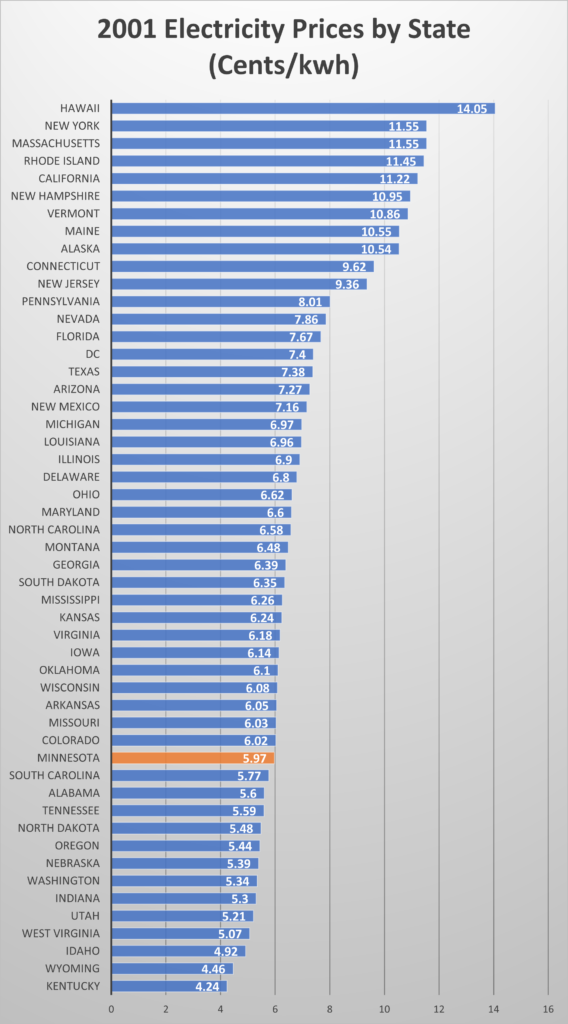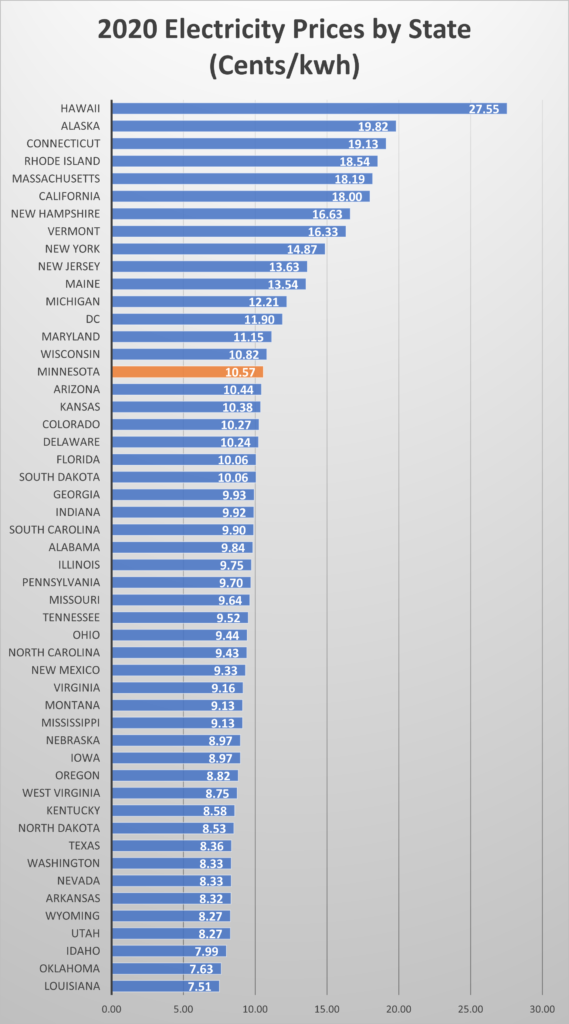Minnesota electricity prices the 6th fastest-growing in the country
Electricity prices in Minnesota have been growing at the 6th fastest rate in the country since 2015, according to data provided by the Energy Information Administration (EIA).
Minnesota once had the 26th least expensive electricity prices in the United States, in 2015.
Since then, however, Minnesota electricity prices have increased by nearly 11 percent — a growth rate surpassed only by California (17%), Michigan (14%), Vermont (13%), Alaska (13%), and Washington (13%).
As a result, Minnesota’s electricity prices are now the 16th most expensive in the country — a leap of ten spots since 2015 — and are increasing faster than eleven out of the fifteen states that are currently more expensive.
This means that Minnesota electricity prices are on pace to break into the top ten most expensive in the U.S. — unless energy policy in the state starts prioritizing affordability.
Increasing Electricity Prices, A Decades-Long Trend
Unfortunately, Minnesota’s rise toward some of the highest electricity prices in the nation has been a decades-long trend.
Since 2001, Minnesota electricity prices have been the 8th fastest growing in the country. Since 2010, the 9th fastest.
This means that Minnesota’s electricity prices have maintained a top-ten growth rate in the country across the last 20 years.
The graphs below highlight this trend by showing Minnesota electricity prices compared to other states in 2001 and 2020. Minnesota is the orange bar and jumps from among the lowest prices in the country in 2001 to among the highest in 2020.


What caused Minnesota electricity prices to increase so substantially compared to other states?
Minnesota jumped from the 14th least expensive to 16th most expensive electricity prices in the country due to massive spending on wind and solar power facilities to satisfy Minnesota’s renewable energy mandate.
Minnesota’s Renewable Energy Mandate
You can find a detailed explanation here of how Minnesota’s renewable energy mandate has resulted in enormous increases in electricity costs for the state’s largest utility company, Xcel Energy.
In short, Minnesota’s renewable energy mandate required state utility companies to invest billions of dollars in wind turbines and solar panels at a time when electricity sales were decreasing.
This means that the billions of dollars in investments electric utility companies spent on new power plants in Minnesota were driven entirely by government mandates, and not an increase in electricity demand.
Imagine if Target built hundreds of new stores despite store sales declining. The price of goods at Target would skyrocket to pay for the new buildings, and it would likely go out of business due to competition with other supermarkets.
Utility companies in Minnesota don’t have this issue, however, because they’re government-regulated monopolies. This means electricity ratepayers have no choice but to purchase electricity from their provider no matter how expensive electricity becomes.
In the absence of a free market for electricity in Minnesota, it is incredibly important to have competent regulators at the Minnesota Public Utilities Commission (PUC) to hold utility companies like Xcel accountable to dramatically increasing electricity prices and ensure that the cost of electricity remains affordable for all Minnesotans.
Unfortunately, as the last two decades of failed energy policy show, Minnesota PUC commissioners have been more concerned with padding Minnesota’s renewable energy stats than maintaining affordability.